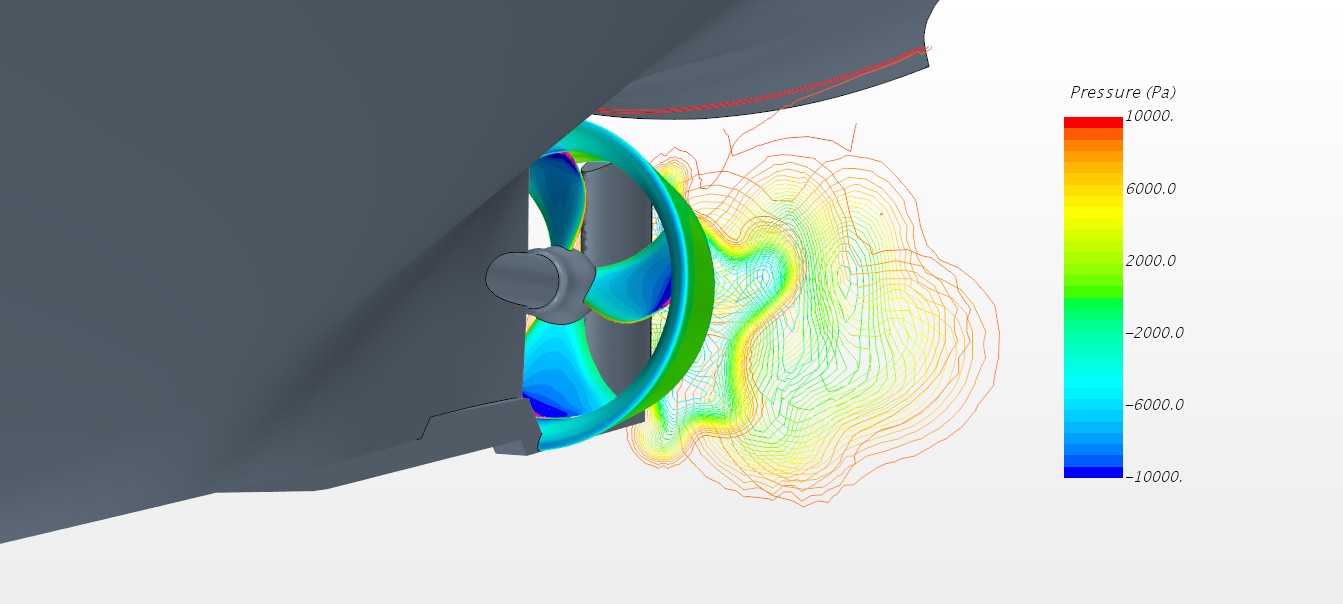Ship propulsion engineering
Ship Propulsion Solutions: How CFD Enhances Efficiency and Performance

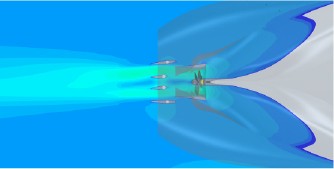
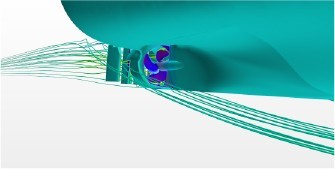
A methodology for numerical self-propulsion tests using our CFD codes, optimizing ship propulsion.
We have a fully validated methodology for carrying out numerical self-propulsion tests with our CFD codes. Our experience in ship propulsion solutions and feedback from sea trials allow us to perform detailed predictions of the self-propulsion performance of any type of ship. We determine effective wake coefficients, thrust deduction, rotary-relative efficiency and overall propulsion performance in behind conditions.
Propulsion Solutions: Reproduce virtually the ship sailing with its propeller
The numerical self-propulsion simulation recreates the ship sailing with its designed propeller in such a way that the performance expected on its real life can be predicted with very high accuracy. The assessment of the thrust deduction factor is important for a redesign of the hull and modifications in the propulsion arrangement in such a way that the hull-propeller interaction is improved.
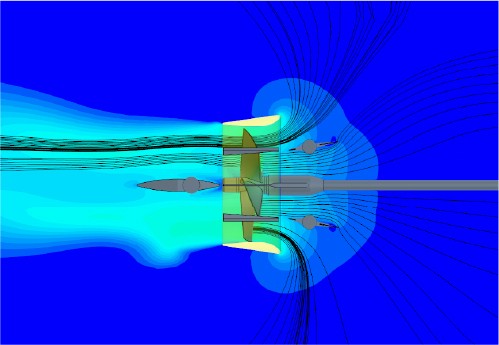
Bollard pull analysis: Boost Efficiency & Power in Ship Propulsion
When it comes to bollard pull prediction, we have also validated our simulations with real tests performed on pusher boats, tugs and AHT. Do not play with the bollard pull performance of your ship, count on us during the project stage and avoid costly problems discovered during sea trials, when the solution will be much more complicated.
Guarantee Bollard Pull
Propeller design
Reduce fuel consumption with a custom designed propeller
The propeller works in the wake of the ship, where there is normally a highly turbulent and uneven flow. That is why the wake-adapted propeller design using CFD is essential to obtain optimum performance. A propeller design adapted to the ship’s needs guarantees optimum engine and ship performance, avoiding “surprises” in the form of noise, vibrations, low speed, or excessive consumption.

Nozzle design
CFD optimization has also reached the nozzles, does not settle for traditional profiles. Depending on the type of vessel, power, towpull, and speed requirements, we optimize the geometry of the nozzle for maximum performance of the propulsion system assembly and reducing the thrust deduction interaction with the hull.
Cavitation troubleshooting
- Cavitation is a hydrodynamic phenomenon by which water vapor bubbles are formed on the low pressure areas of the blade, they collapse when they reach higher pressure areas producing erosion, noise and vibrations.
- We have extensive experience in early detection of this phenomenon through CFD simulation, designing cavitation-free propellers, and advising improvements to the ship’s propeller system and hull to control cavitation.
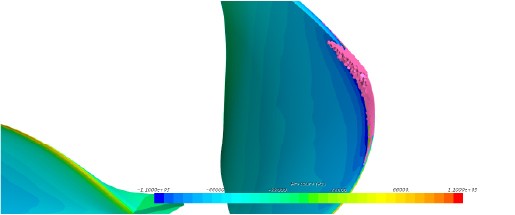
“How to address cavitation problems in your propeller”
Energy efficiency improvement devices
There is controversy and doubts on the part of the shipowners in relation to the expected improvements and applicability to their ship of the energy saving devices for propulsion (ESD’s). We carry out feasibility studies for its application, advising on the suitability and best cost / effectiveness ratio. As an independent advisor, we guarantee objectivity in our analysis, based solely on technical and economic criteria, considering the entire operation of the vessel and its actual performance, so that the shipowner makes the best decision for his business interests.
